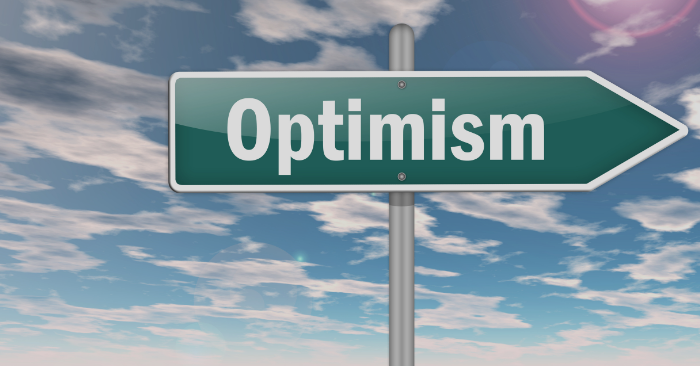
December 2022
Vic Davis & Associates
December is known around the world as a family time of celebration honoring cultures, religions and traditions that have been with humanity for hundreds of years. See below for a mix of the weird and wonderful facts about this magical month!
-
- An almanac prediction states that if snow falls on Christmas Day, Easter will be warm, green and sunny.
- The name December comes from the Latin decem for “ten”, as it was the 10th month in the Roman Calendar.
- The term Yuletide comes from a Norse tradition of cutting and burning a tree to bring in the Winter Solstice. This was to last through 12 days – later known as the 12 days of Christmas.
- December 12th is Poinsettia Day.
- Saint Nickolas, who would eventually be called Santa Claus, was originally the patron saint of children, thieves and pawnbrokers!
- December 28th is considered by some to be the unluckiest day of the year.
- The first artificial Christmas tree was made in Germany, fashioned out of goose feathers that are dyed green!
- Spiders and spider webs are considered good luck on Christmas.
- Common decorations on a Christmas tree each have their specific meanings. Candles – the light of the world, the Star at the top is a reminder of the first Christmas night and Candy canes are to represent the Shepherd’s cane.
- “Jingle bells” was composed in 1857, and not for Christmas – it was meant to be a Thanksgiving song!
- In 1647 Oliver Cromwell, English Puritan leader, banned the festivities of Christmas for being seen as immoral on such a holy day. Anyone who was seen celebrating was arrested! The ban was lifted in 1660.
- An ancient legend states that forest animals can speak in human language on Christmas Eve!
Remember to….
- Do it right the first time.
- Laugh a lot. A good sense of humor cures almost all of life’s ills.
- Never underestimate the power of a kind work or deed.
- Don’t undertip the waiter just because the food is bad; he didn’t cook it.
- Change your car’s oil and filter every three thousand miles regardless of what the owner’s manual recommends.
- Conduct family fire drills. Be sure everyone knows what to do in case the house catches fire.
- Don’t be afraid to say, “I don’t know.”
- Don’t be afraid to say, “I made a mistake”.
- Don’t be afraid to say, “I need help”.
- Don’t be afraid to say, “I’m sorry”.
- Never compromise your integrity.
- Keep a note pad and pencil on your bedside table. Million-dollar ideas sometimes strike at 3 A.M.
- Show respect for everyone who works for a living, regardless of how trivial their job.
- Read the Sunday New York Times to keep informed.
- Send your loved one flowers. Think of a reason later.
- Attend your children’s athletic contests, plays and recitals.
- When you find a job that’s ideal, take it regardless of the pay. If you’ve got what it takes, your salary will soon reflect your value to the company.
- Don’t use time or words carelessly. Neither can be retrieved.
- Look for opportunities to make people feel important.
How quitting can be good for your long-term
By: Molly Liebergall
What poker pro Annie Duke can teach you about quitting on time
Ever been told to quit while you’re ahead, or that winners never quit? Poker player-turned decision strategist Annie Duke explains why this advice is costing you time and money.
In this edition of Author Talks, McKinsey Global Publishing’s Molly Liebergall chats with former professional poker player Annie Duke about her new book, Quit: The Power of Knowing When to Walk Away (Penguin Random House, September 2022). Annie Duke retired from professional poker with more than $4 million in winnings by knowing when to stick out a hand and when to cash in her chips. Much like a poker career, life, she says, is “one long game,” and the biggest winners are also the most strategic quitters. An edited version of the conversation follows.
How can quitting be valuable?
People have the idea that quitting slows you down, that it stops your progress, but in reality, quitting really speeds you up. If you’re engaged in something that isn’t the best path for you to achieve the things that you want to achieve, then staying on that path—not quitting—is going to slow you down, whereas if you quit and switch to another path that is more likely to cause you to gain more ground, that will speed you up.
That’s the number-one reason why quitting can be so valuable. The second reason has to do with the fact that pretty much every decision we make is under the influence of two sources of uncertainty: the first is pure luck. If I’m playing poker, I don’t control the cards that are coming. When you’re driving on the road, you don’t control the other cars that are driving around you. When you go into a new job, you don’t control who might quit after you go there, what new leadership might come in, or how they might behave.
The other influence is hidden information. For most decisions we make, we know very little in comparison to all there is to be known. Inevitably, after we make a decision, we learn new information. I think that we’ve all had that feeling of, if I had known then what I know now, I would’ve made a different decision. That’s that feeling of new, hidden information revealing itself to you that would’ve changed your choice.
The option to quit is what makes it so that we can react to new information. Even further, it also is what allows us to make decisions under uncertainty in the first place. . . . This lets us do things like go on a date—imagine the first date you ever went on, and if you had to marry that person.
This is where quitting becomes so incredibly valuable: the option to quit is what makes it so that we can react to new information. Even further, it also is what allows us to make decisions under uncertainty in the first place, because when we learn that new information, we have the option to quit. This lets us do things like go on a date—imagine the first date you ever went on, and if you had to marry that person.
This is what allows us to do things like agile software development, for example, or A/B testing, or anything that relies on the option to quit the stuff that isn’t working. I think that is what’s so important about understanding the value of quitting as a decision skill: it lets you deal with uncertainty, and it will get you to where you want to go, faster.
How do you know when it’s the right time to quit?
We can’t perfectly see the future. We’re not omniscient. We don’t have a crystal ball. It’s hard for us to know exactly how other paths that we might be thinking about taking might turn out. This makes this decision to quit really hard, due to not knowing exactly when the right time is.
If we were perfectly rational and omniscient, the exact time to quit would be when the expected value—what you’re getting out of the path you’re on—is no longer worthwhile, either on its own or in comparison to other paths that you might want to take. The problem for us is that it’s very hard to see that, because it’s a forecast, and we know that forecasts are uncertain. The thing I try to tell people is that you should assume that if you’re thinking about quitting, it’s already probably past the time that you should have quit.
There’s wonderful research from Steven Levitt, the economist who wrote Freakonomics. He built a website for people who were struggling with big life decisions like: Should I quit my job? Should I leave my relationship? Should I move to a new town? Should I stay or should I go? Should I quit or should I grit? When they were in that moment of, “I don’t know, because it’s 50-50 and I’m having trouble deciding,” people could go to this website, and the website would flip a virtual coin for them.
You should assume that if you’re thinking about quitting, it’s already probably past the time that you should have quit.
People who are willing to go flip a coin for a big life decision like this must really feel like it’s a 50-50 choice, right? Otherwise, the choice would be clear one way or the other. Given that, you would assume that the quitters here—the ones who are told to quit by the coin or who quit on their own—would be equally happy as the ones who were told to stay.
What he actually found when he measured the happiness of the coin flippers two months and six months later was that the quitters were happier. That shows that the moment when people felt it was 50-50, it was actually well past 50-50. This is the problem that we have: we need much more signal than is actually necessary in terms of the right time to quit.
Why can grit sometimes be a bad thing?
If we think about grit and quit, I think people view those as opposing forces. In the battle of the popular mind, grit is the clear winner. Grit is a virtue. It’s a sign of character, as a matter of fact. We admire those who persevere, whereas quitting is clearly a vice—at least as people view it—quitting shows that you’re weak willed.
We can see this reflected in aphorisms like, “Winners never quit and quitters never win.” That’s how we think about the battle between the two. In reality, grit and quit are the exact same decision if you think about it, because if I choose to stick to something, that means I’m choosing not to abandon course, and if I choose to walk away from something, it means I’m choosing not to stick to it. They’re literally the exact same decision.
There are certainly circumstances under which quitting would be correct. As an example, if I’m at the top of Mount Everest and there’s a snowstorm, I should probably quit my summit attempt. That would be a wise thing to do. This means that the flip side must be true, and that sometimes sticking it out—or gritting it out—can’t possibly be correct. Those circumstances happen in particular when the path you’re on is no longer worthwhile.
There are certainly circumstances under which quitting would be correct. As an example, if I’m at the top of Mount Everest and there’s a snowstorm, I should probably quit my summit attempt. That would be a wise thing to do. This means that the flip side must be true, and that sometimes sticking it out—or gritting it out—can’t possibly be correct.
The value of grit is that it gets you to stick to worthwhile things that are also hard. Most things that are really worth doing are going to be hard also. We want to stick to those worthwhile things even when we’re in down periods.
When grit is really great is when it’s getting to you to stick to something that is going to get you to your goal. The issue is that it also gets you to do that when the end goal is no longer worth pursuing, and when there are other paths you could take that would get you to where you want to go faster.
Why is ‘quit while you’re ahead’ actually bad advice?
There are a few problems with “quit while you’re ahead.” The first is, what makes a path worth sticking to is not whether you’re ahead right at this moment.
Let’s stay that I bought a stock at $50 and it’s now at $60. I’m ahead, but that’s not what actually tells me whether I should stick to it. What tells me whether I should stick to it is whether, going forward, I feel that this is a stock that’s in a good position or not. Is this a good place for me to have my money versus other places that I could invest my money?
“Quit while you’re ahead,” is getting you to focus on the wrong thing because it’s not telling you what “ahead” means. But the bigger problem with that aphorism is that it’s amplifying a cognitive bias we have that’s quite bad. For most things, particularly when we get bad news, we have a tendency to quit too late, but there is one place where we tend to quit too early, and that is exactly when we’re ahead.
To get this idea across, I’d love to talk about a study that was done by Colin Camerer and many colleagues, including Richard Thaler, who’s a Nobel laureate. They looked at a plethora of trip sheets of New York City cab drivers, and what they found was a very interesting pattern: when the driving conditions were really good, the cab drivers were quitting early in their shift, and when there weren’t a lot of fares to pick up, they were staying in the cab and sticking it out.
For most things, particularly when we get bad news, we have a tendency to quit too late, but there is one place where we tend to quit too early, and that is exactly when we’re ahead.
This is the opposite of what you would do in an ideal world. When the driving is really good, meaning there are lots of fares around, in terms of maximizing your income, one would think that you would stay in the cab and keep driving because there are so many fares to be picked up. Then, when there aren’t a lot of fares around, you would say, “I’m not going to take my time doing this. I’m going to quit, and I’ll come back another day when the fare conditions are better.”
The cab drivers flipped their behavior. It turned out that most of the drivers had set an earnings goal for the day. If you hit your earnings goal really fast, that means that there are lots of fares around. They hit their earnings goal, so they were ahead, and they quit. When the driving was bad, they didn’t hit that earnings goal, and they kept driving around in their cab trying to get to their daily earnings goal.
They stuck while they were behind, and they quit while they were ahead, costing them a lot of money. It turns out that this is a very strong human tendency: when things aren’t going well for us, we tend to escalate our commitment to the cause, but when things are going really well—you have a stock at $60 that you bought at $50—then we want to get out of it right away.
What can poker teach leaders in any sector about sunk cost?
When we’re thinking about businesses and leadership and how leadership should be thinking about quitting problems, what we need to realize is that, when it comes to the stories about people quitting too late—cab drivers, people in the stock market, people climbing Mount Everest and continuing to the summit after conditions have turned bad on them—this is repeating across your organization.
Every employee has these tendencies because these tendencies are embedded cognitive biases. In particular, one thing to think about is the sunk-cost effect. We tend to take into account resources that we’ve already spent when we’re thinking about whether to spend more on a project. You’ll hear people say, “If I quit now, I’ll have wasted my time.” That’s a sunk-cost fallacy problem. The time that you’ve already spent is gone—what matters is if you’re wasting more time by continuing with the project.
The other thing to understand, and this is particularly important for leadership, is that when people are considering quitting, there are issues with what we call “internal validity” and “external validity.” Internal validity is basically: How am I going to view myself? Am I going to view myself as having wasted my own time? Or am I going to view myself as having been inconsistent? Issues of external validity are about: How are other people going to judge us?
You’ll hear people say, ‘If I quit now, I’ll have wasted my time.’ That’s a sunk-cost fallacy problem. The time that you’ve already spent is gone—what matters is if you’re wasting more time by continuing with the project.
When we’re thinking as leaders about this, what we need to understand is that people have these biases, which means that they’re going to be quitting too late in general. They’re going to be recommending that projects get shut down too late. Why? Because of this fear of waste and the fear of the career risk that’s associated with quitting something. If people are afraid of quitting until it’s so certain that that’s the only choice—which is well beyond the point at which they should have walked away—that’s a problem for you as an organization.
One of the things that I try to get people to think about is something that comes from poker. In poker we used to remind ourselves, as professionals, that poker is one long game. It was advice that I was given when I was a new player. What it meant was that over the course of all the hands that I might play over my whole lifetime, I wanted to make sure that I was investing my resources, my money, my time, and my attention into the hands that were going to, in the long run, make me the most money.
How I might feel on a particular hand, at the moment that I might have to fold it, should matter very little. I shouldn’t be thinking about, “but I already have money in the pot,” because that doesn’t really matter. What matters is, “Is the next chip that I’m going to put in the pot going to make money?” It shouldn’t matter that I’m worried how people are going to perceive me for folding, for example—people do sometimes make fun of you for folding at a poker table, believe it or not.
When I’m in a poker game, I shouldn’t be like the cab drivers. I shouldn’t say, “If I make this amount of money in the game, I’m going to quit.” What I should say is, “I’m going to play as long as I feel like I’m playing really well.” What matters is how I do in the long run, because poker is one long game, and life is one long game.
In order to play the game of poker or play the game of life well, you have to quit in some situations, particularly those situations where other people might not. Poker players find it very hard to quit games when they’re losing. You have to be willing to do that so you can get yourself in a better position later. People don’t want to quit projects for the same reason. You, as leadership, have to remind them that it’s one long game.
I shouldn’t be thinking about, ‘but I already have money in the pot,’ because that doesn’t really matter. What matters is, ‘Is the next chip that I’m going to put in the pot going to make money?’
It’s also really important for you to realize how you might be exacerbating that particular bias: the unwillingness of people to walk away from things. How might you be doing that? Well, if you judge people solely by their outcome—for example, only asking, “Did you finish the project? Did you complete it?”—well, maybe it wasn’t a project that was worth completing.
If you have a bad outcome, which is generally something like missing a sales target or not completing a project on time, you end up in a postmortem where people might say they’re concerned about the process that led there—but you’re only there because you had a bad outcome. You’re only there because you missed a target, or a date, or a sales number at the end of Q3.
Your employees hear that. What they hear is, “I am being judged for whether I finish things. I am being judged for whether I hit the target. As much as they’re telling me that they care about the process, when I’m in a room defending myself, it’s when I’ve missed.” That’s going to create behavior from the people who work for you, where they don’t want to quit things.
What surprised you most in your research and writing?
The thing that surprised me the most in the writing of this book was the discovery through the work of Maurice Schweitzer and his colleagues that goals have a downside. I, like most people, thought about goals as just a positive. You set a clear target, you head toward that target, and that’s very motivating. I think that’s the way that most people feel about goals.
However, goals get you to head toward a finish line, come what may. There’s a very well-known case from the 2019 London Marathon of Siobhan O’Keefe. She starts to experience pretty bad pain somewhere around mile three. On mile eight, her fibula snaps. She literally breaks her leg. She kept running all the way to the finish line in excruciating pain, obviously putting at risk the chances that she runs another marathon in her life.
This is the thing that we need to realize about goals: they can get us to behave in ways that make us keep going toward the summit in a snowstorm or well past the turnaround time. It causes people to drive businesses into the ground.
The thing about Siobhan O’Keefe is that she’s not even that unusual. In the same marathon, someone broke their ankle right around the same point and also finished that marathon. The reason why they don’t stop is because there’s a finish line.
If you run 13.1 miles, in the context of a marathon, you have failed because you didn’t reach the 26.2 mile marker. But if you run 13.1 miles in the context of a half marathon, you have succeeded. Once we’ve set that finish line, anything short of that goal is failure because we grade the achievement of goals as pass/fail in nature, so we just keep going. It causes us to ignore very clear signals from the world, like a broken bone, that we should be quitting. It just makes us ignore it.
Whenever you set a goal, have a set of ‘unlesses’ that go along with that: ‘I’m going to go toward this finish line, unless . . .’ What is the ‘unless I break a bone’ for any goal that you set?
This is the thing that we need to realize about goals: they can get us to behave in ways that make us keep going toward the summit in a snowstorm or well past the turnaround time. It causes people to drive businesses into the ground. It causes people to stay in really bad relationships. It causes people to stay in jobs that aren’t going well and to stick to projects that they shouldn’t be sticking to because there are goals associated with all of those, and we can’t quit them once we set them.
Whenever you set a goal, have a set of “unlesses” that go along with that: “I’m going to go toward this finish line, unless . . .” What is the “unless I break a bone” for any goal that you set?
Annie Duke is a decision-making strategist and former professional poker player. Molly Liebergall is a digital editor based in McKinsey’s New York office.







Leave A Comment